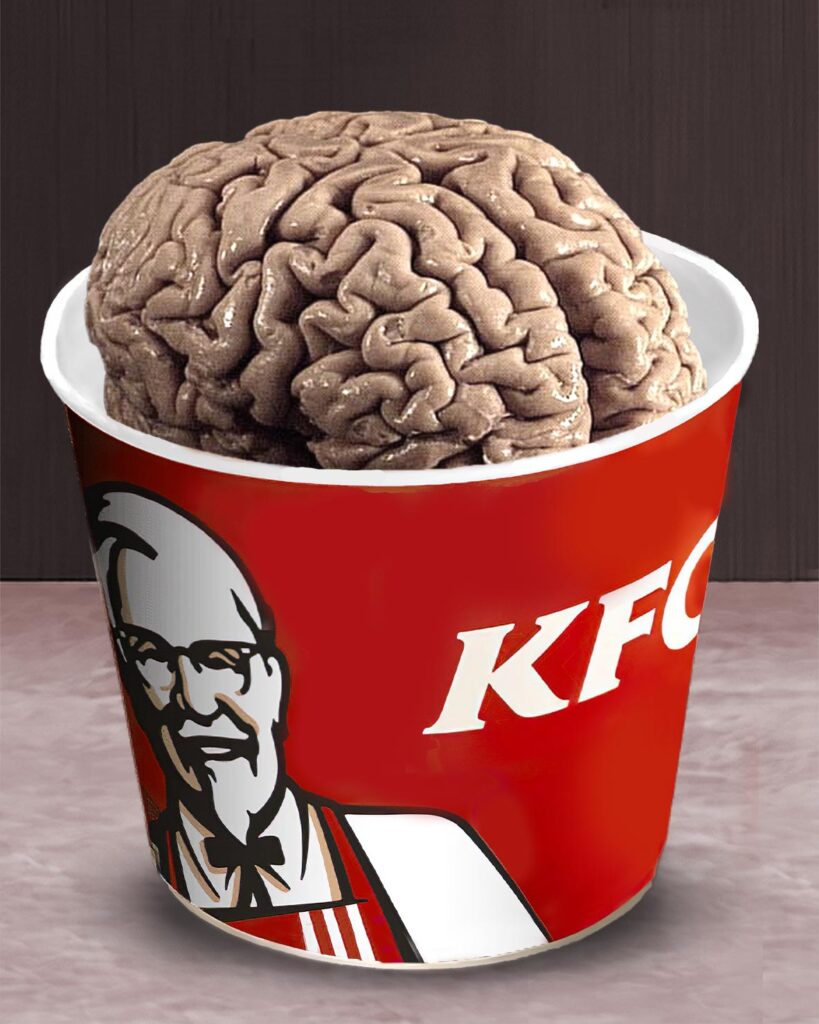Open Mind
Sometime in the mid-1960s, I started seeing commercials for a new fast-food chain called Kentucky Fried Chicken. The chicken, prepared according to Colonel Sanders’s secret recipe using eleven herbs and spices, was unbearably tempting. I could practically smell it coming out of the TV screen.
I asked my mother whether we could get Kentucky Fried Chicken sometime, and her response was absolutely not. “It’s expensive, and it’s bad for you,” she said. So it wasn’t until I was in high school, when I was able to go places on my own and had a bit of money to spend, that I finally got to buy myself some of that long-anticipated chicken.
Needless to say, the chicken was terrible. It was salty and greasy, and it left my stomach feeling unsettled. I was extremely let down, but I chalked it up to a learning experience. “OK, now I know,” I said to myself.
But the story gets worse: A week later, I saw another commercial for Kentucky Fried Chicken, beautifully fried to a golden brown and oozing herbs and spices, and I wanted the chicken again. Not only that, I went out and bought the chicken again. That’s when I realized how insidious advertising can be, particularly when it’s accompanied by seductive visual images — it can bypass all of your logic and common sense and go straight to the infantile “I need it!” portion of your brain. That was scary as hell.
I’m not opposed to advertising in principle. Up through the 1950s, advertisements were mostly informative. They made you aware that a product exists and then made a rational argument for why you should buy it. I’m not saying that the argument was necessarily good — cigarette commercials would talk about the smoothness of their blend of tobacco and the effectiveness of their filter, without bothering to mention that smoking those cigarettes would kill you — but at least they called upon the customer’s ability to reason. They were accompanied by appealing images, but those images served as sugar to help the medicine go down. The ads themselves were still mostly medicine.
But advertisements now are not intended to persuade; they’re intended to capture you against your will, using whatever new psychological techniques the researchers have cooked up. Not only do current TV commercials say very little about the merits of their product; some of them don’t even mention the product until the final title card. They use carefully crafted imagery to get your neurons all tingly, and then cap off the experience by giving you a brand name to associate with that tingliness. No matter how much of a rational thinker you are, there’s nothing you can do about it.
I try to defend myself by avoiding advertisements as much as possible. I scrupulously ignore the ads in my Facebook feed, and avert my eyes from any ads I encounter in newspapers and magazines. But that sort of defense doesn’t go very far. Even when you don’t encounter ads firsthand, they seep into the culture and get at you through your social interactions. I stopped watching TV some time ago, yet somehow I still know who “Jake from State Farm” is.
So really, the only thing I can do is actively counteract the effects of advertising — meaning that if I see a product advertised, I vow not to buy it. If I see a ballot proposition heavily advertised, I make it a point to vote for the other side. Naturally, there exceptions to this policy: If good, objective, reliable sources can convince me that the thing being advertised really is better than the alternatives, then I might go for it. But my default position is to say no, and the burden of proof is on the party who wants to convince me otherwise. This may seem like an extreme reaction, but it’s the only one that makes sense to me. Somebody is paying for access to my brain, which in itself isn’t a good thing; but on top of that, the person to whom that payment is being made isn’t me. I didn’t have a voice when that deal was made. Some agency is renting out the inside of my head as if it’s real estate, and so it’s up to me to bar the door and defend my private property. You see, even all of these years later, I still crave KFC, and that’s horrifying.
